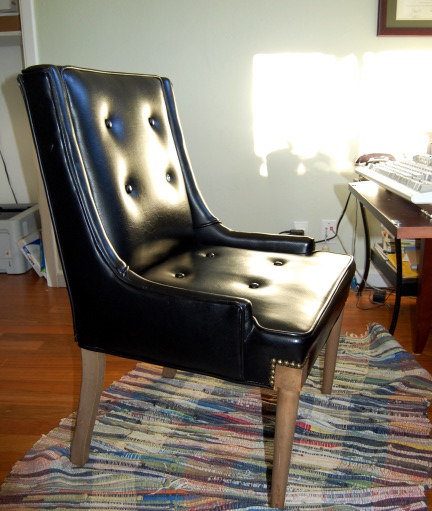
Yesterday, a friend asked me where to get an office chair. I told her I got it at a thrift store for $15. It’s black leather and in excellent shape.
She needed a chair too, so we went to the same store and she found a chair for $16. She wasn’t sure the chair was quite right, so we went to a big office supply chain and looked at the chairs. They had the exact same chair we saw in the thrift store for $50. She went back and bought the thrift store chair and saved herself $34.
On the same trip, I bought a hole puncher and a binder for $2.25, combined. The same thing at the office supply store would have cost $16, according to their website. That means I saved $13.75 by buying secondhand.
Thrift stores aren’t the only options for bargain hunting. Estate sales, yard sales, consignment stores, and even antique stores yield great deals all the time. But regardless of the places you secondhand shop, some basic procedures make shopping go smoother. Here are some tips:
Make a shopping list–I have a piece of paper in my wallet with a list of things I want for the house. Sample things on my list right now: A coffee table, nickel-plated hardware for the kitchen cabinets, a glass pitcher, vintage wall phone, and a rolling shelf to fit under my desk. The list also has dimensions for the furniture so I know how big it should be.
Put everything on the list–Lots of people look at secondhand shopping as just a way to get clothes or furniture, when thrift stores (and the like) are a great place to get everything from wrapping paper to frames to office supplies. If you want it, throw it on the list.
Be patient–The key to bargain shopping is to keep looking until the things you want show up. I just bought two never-used, restaurant-quality cookie sheets for $1.50 total. New they would have cost me $50. Great deal, right? The thing is, I’ve been looking for them for about 6 months. So I saved a whopping $48.50, but I had to wait 6 months. It’s a trade-off.
Carry a measuring tape–I cannot tell you how many times I have used that little measuring tape in my purse, not just for secondhand shopping but for life in general. Since I write down the dimensions of furniture I want on my list, it comes in extra handy at a thrift store.
Use your imagination–Could you take that ugly chandelier and spray paint it hot pink for your daughter’s bedroom? Maybe a golf caddy could be turned into a tool caddy for the garden? Or how about taking those old 1970s pepper mills and painting them an awesome shade of turquoise? It takes a little creativity to spot a diamond in the rough.
Don’t buy just because it’s cheap–A good deal turns to wasted money if you don’t need or want the item at hand. I had to learn this lesson about clothes. It turns out that if I don’t like some item of clothing, it doesn’t matter how cheap it is, I still won’t wear it. And nothing makes me feel dumber than buying something at a thrift store and then donating it again a few months later. So when in doubt, don’t buy it.

#3 = the hard part!
Second hand shopping is the best. I regulary outfit myself, hubby, and 8 yr old daughter in comfy, stylish clothing, all from the thrift store. Yes, you do have to be patient, but it also helps to have a few that you frequent regularly, and get to know the staff. At my favorite, the girls know I sew, and buy all my patterns there, so some mornings I’ll get a call about new(ish) patterns that have been donated, or about fabrics that they know would appeal to me. I don’t get deals on prices(any better than they already are, that is), but, I get a heads up that what I may want is there, and I can check it out before someone else snaps it up.
Wolfsong, great tips. I never thought of cultivating a relationship with the people at the thrift stores I visit, but I can see now how that would benefit. Thanks!